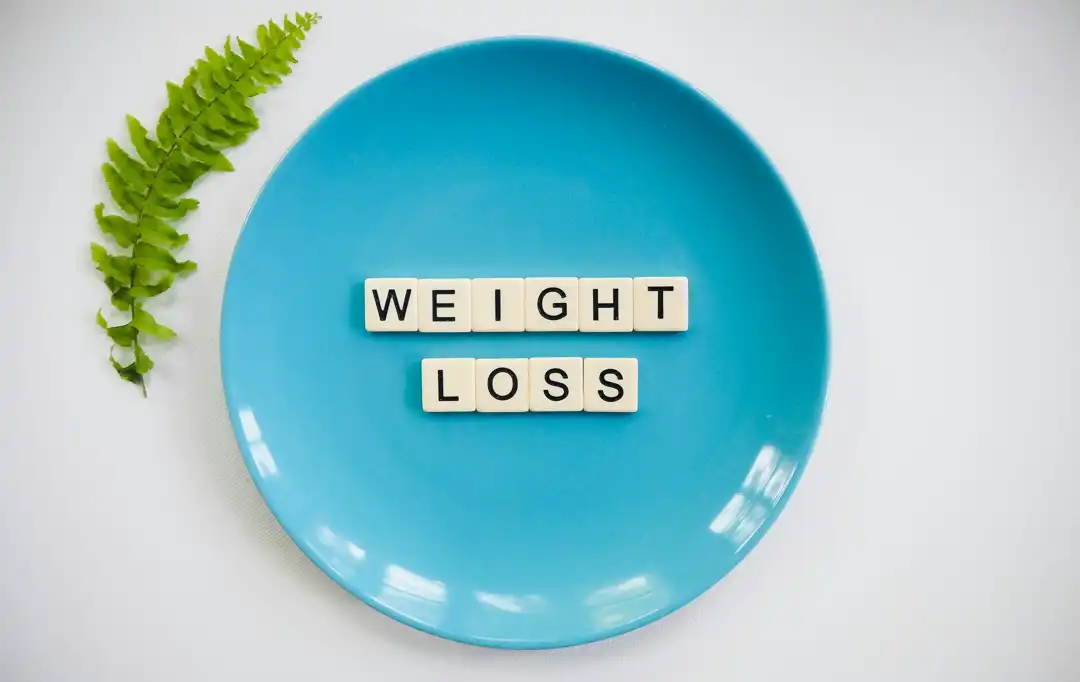Intermittent Fasting and Protein Pacing for Weight Loss: Impact of Meal Frequency and Duration

**Unlock Your Metabolic Potential with Intermittent Fasting**
Intermittent fasting - a powerful dietary strategy for weight loss and health intermittent fasting if has emerged as a popular and effective dietary strategy for weight loss and overall health optimization. Studies backed by numerous meta-analyses and reviews consistently affirm its effectiveness in achieving both of these goals. This non-invasive approach involves cycling between periods of eating and fasting rather than restricting calorie intake. The effectiveness of IF lies in its ability to manipulate the bodys metabolic state. By abstaining from foods for specific time periods the body undergoes a state of autophagy where cellular debris and damaged proteins are removed. This process promotes tissue regeneration, fat loss, and improved metabolic efficiency. If can also lead to hormonal changes that aid in weight regulation and appetite control. Several different types of intermittent fasting exist each with its own unique schedule and duration of fasting periods. The 'periodic' approach, for example, involves fasting for one or several days per week, while other methods involve time-restricted feeding windows, such as the 16/8 method (16 hours of fasting and 8 hours of eating) or the 5:2 method (fasting for two non-consecutive days per week). The optimal method for each individual depends on their dietary habits and health goals.

## Fueling Fat Loss: Intermittent Fasting Meets Protein Power
The interplay of intermittent fasting and protein pacing for weight loss intermittent fasting if2 and strategic protein pacing are two potent strategies employed by health enthusiasts for weight loss and body composition optimization. If2 involves alternating periods of eating and fasting, while protein pacing controls the timing and frequency of protein intake throughout the day. Both approaches have been shown to effectively promote weight loss and fat reduction. When combined these two interventions amplify their effects on weight management. If2 promotes prolonged periods of fat oxidation due to the reduction in calorie intake during fasting periods. This creates a favorable metabolic state for fat loss. Additionally, strategic protein pacing ensures that protein is utilized efficiently, minimizing muscle loss and supporting fat loss. By optimizing protein intake timing, lipolysis (fat breakdown) is maximized while preserving muscle mass. The combination of if2 and protein pacing promotes not only weight loss but also improves body composition. Studies have shown that this strategy significantly reduces fat mass and increases fat-free mass (muscle and other tissues) compared to either intervention alone. This positive change in body composition contributes to improved metabolic health and overall well-being.

**Fuel Your FatBurning: Master Intermittent Fasting & Protein Pacing for Weight Loss**
eating patterns for weight loss: intermittent fasting and protein pacingintermittent fasting (if) combined with strategic protein pacing offers a powerful approach for weight loss and body composition transformation. One common intermittent fasting pattern is the 7:7 method, where you limit your eating window to 7 hours per day, while abstaining for 17 hours. During the eating window, you can indulge in ad libitum (eating freely) of your choice. This combination promotes fat loss while preserving muscle mass. By restricting your eating window you naturally consume less calories leading to weight loss. Additionally the protein you consume during your gastronomic window plays a crucial role. By pacing your protein intake strategically you can maximise its metabolic impact. Protein is highly satiating, meaning it keeps you feeling full and satisfied, reducing overall calorie intake. The remaining 5 or 6 days of the week where there is no 7-hour window can be used for mindful eating. This approach ensures that you meet your nutrient needs while minimizing calorie surplus. By avoiding overeating during non-eating hours you can further support weight loss and fat loss.

**Unlock Your FatBurning Potential with Alternate Day Fasting**
alternated day fasting: a powerful weight loss tool alternated day fasting (adf) is a unique approach to weight management that involves cycling between periods of eating and fasting. Unlike traditional diets that restrict calories, adf simply alternates between days of eating and fasting. This method has gained popularity due to its simplicity flexibility and potential health benefits. The basic principle behind adf is simple. You eat normally on certain days while on other days you limit your calories intake at a minimum. This intermittent fasting pattern triggers a cascade of metabolic changes that promote fat loss and preserve muscle mass. Studies have shown that adf can lead to significant weight loss and fat reduction while maintaining or even increasing lean muscle mass. The beauty of ADF lies in its flexibility. You can tailor the window to your lifestyle and your preferences. Many people find success with a 16/8 method, which involves 16 hours of fasting and 8 hours of eating each day. This approach is achievable for most people and allows for the inclusion of your favorite foods during the eating window. Adf unlike other diets does not require any rigorous calorie counting or intense exercise making it easier to maintain in the long run.

**Fueling Your Body: Beyond the Timing of Intermittent Fasting**
Intermittent fasting isnt just about controlling what you eat its about quality and quantity of calories during both your feasting and your fasting periods. While the timing of eating plays a role in weight management and health benefits the composition of your meals matters just as much. metabolic magic with ifif triggers a metabolic shift known as 'metabolic switching,' which promotes fat-burning and preservation of lean muscle mass. This process involves:- increased fat oxidation: your body efficiently breaks down fat for energy. Your body produces ketones that can be used as an alternative energy source. - activated cell signaling: if stimulates insulin sensitivity, reduces inflammation, and promotes autophagy (cellular clean-up). These changes typically require at least 24 hours of fasting highlighting the importance of prolonged fasting for maximizing these benefits. nutrient-dense powerwhile traditional if emphasizes the timing of eating, it often overlooks the quality of calories consumed during both feasting and fasting periods. Prioritizing nutrient-dense foods during these times can significantly enhance your weight loss journey and overall health. Our research has shown that a low-sugar nutrient-dense approach combined with a strategic protein intake significantly improves body composition and health outcomes. This includes:- improved body composition: protein pacing combined with a one-day nutrient-dense if meal pattern significantly reduces fat mass and increases lean muscle mass. - enhanced cardiometabolic health nutrient-dense eating patterns better regulate blood sugar reduce inflammation and improve insulin sensitivity. the power of protein pacingour studies advocate for 'protein pacing,' consuming 25-40 grams of protein per meal, evenly spaced throughout the day. This strategy ensures adequate protein intake while minimizing potential side effects associated with prolonged fasting. Conclusion intermittent fasting offers a powerful approach to weight management and health optimization. If you focus on the timing and quality of your meals you can maximize the benefits of if and achieve sustainable results. Remember to prioritize nutrient-dense foods and strategically pace your protein intake for optimal results.

**Intermittent Fasting: Fueling Your Body for Better Health**
The impact of intermittent fasting on body composition and cardiometabolic health intermittent fasting if has emerged as a promising dietary approach for weight loss and metabolic health improvement. The traditional approach involves periodic cycles of eating and fasting usually involving prolonged fasting periods of 12 hours or more. Recent studies suggest that strategically pacing protein intake during intermittent eating periods can further enhance its benefits. In this context researchers investigated the effects of two different intermittent fasting patterns if1-p 36-hour intermittent fasting and if2-p 60-hour intermittent fasting both combined with nutrient-dense beverages and high proteinfiber low-sugar snacks during. The primary aim was to assess their impact on body composition and cardiometabolic health in overweight and obese individuals over a period of four weeks. The researchers hypothesized that the longer fasting period of the if2-p group would lead to greater weight loss improved body composition and enhanced cardiometabolic health compared to the if1-p group. This hypothesis was based on previous studies demonstrating the effectiveness of intermittent fasting in promoting fat loss and regulating metabolic parameters.

**Saratoga Springs Study: Unraveling Intermittent Fastings WeightLoss Potential**
The study recruited 200 individuals from the saratoga springs new york area seeking to explore the effects of intermittent fasting on weight loss and metabolic health in overweightobese individuals. Potential participants were identified through flyers, local newspapers, and email campaigns. From an initial screening of 55 individuals 42 individuals were deemed eligible for the study. These participants were healthy, nonsmokers, and had a body mass index (BMI) above 27.5 kg/m2, indicating overweight or obesity. To ensure the health and safety of the participants a comprehensive medical examination and history assessment was conducted by their physicians. This assessment aimed to rule out any current cardiovascular or metabolic diseases that could potentially interfere with the study. Additionally all subjects were required to be either sedentary or engaged in light physical activity for less than 30 minutes on two days per week in the six months leading up to the study. The strict criteria for participant selection and thorough medical screening were essential to ensure that the study population was healthy and representative of the target population for investigating the effects of intermittent fasting on weight loss and metabolic health in overweight/obese individuals. This approach allowed the researchers to isolate the effects of the intervention on the variables of interest minimizing the influence of underlying health conditions or pre-existing variations in health status among participants.

**Intermittent Fasting: Fueling Your WeightLoss Journey**
study design and participants the study involved a subgroup of a larger intervention study focusing on the effects of two different intermittent fasting (if) diets – combined with protein pacing – on body composition and metabolic outcomes in overweight/obese individuals. The participants were middle-aged (30-65 years) with a body fat percentage greater than 30% and a weight stable within ±2 kg. All participants obtained the informed written consent of the group before participation. The study was approved by the institutional review board at skidmore college. study intervention and durationthe study employed a 4-week intervention period, divided into a weight-maintenance baseline phase (1 week) and a weight-loss phase (3 weeks). During the baseline phase participants maintained their caloric intake and sedentary lifestyles pre-enrollment. - the weight-loss phase involved following one of two different intermittent fasting protocols: - if1-p: one day of intermittent fasting (36 hours) combined with protein pacing for the remaining six days. - if2-p: two consecutive days of intermittent fasting (60 hours) combined with protein pacing for the remaining five days. outcome measuresthe study measured various body composition and metabolic outcomes, including:- fat mass- fat-free mass- weight loss- changes in body fat percentage.

**Unlock Your FatBurning Potential with Cleanse for Life®**
cleanse for life® - a gentle approach to fat loss cleanse for life® is a revolutionary approach to weight loss that combines intermittent fasting with strategic protein intake. This unique method focuses on achieving sustainable fat loss while preserving muscle mass thanks to its careful calorie balance of just 160 calories per day. This daily calorie allocation ensures your body has enough energy to function optimally while facilitating fat loss. Intermittent fasting is a powerful tool in Cleanse for Life®. By strategically alternating periods of eating and fasting, your body naturally shifts into fat-burning mode. This process involves reducing inflammation stabilizing blood sugar levels and boosting metabolism. The combination of intermittent fasting and calorie restriction in cleanse for life® creates a synergistic effect, leading to effective fat loss without harmful side effects. One of the key aspects of cleanse for life is its emphasis on protein pacing. Protein is essential for muscle maintenance and repair but overeating protein can contribute to weight gain. Cleanse for life® teaches users how to strategically distribute their protein intake throughout the day to maximize fat loss and preserve muscle mass. This ensures that you lose fat while preserving the muscle you need for optimal performance and metabolic health.

**Morning: Start Your FatBurning Engine with Antioxidants** **Evening: Wind Down, Relax, and Supercharge Fat Loss with Antioxidants**
Antioxidant fuel for the fat-burning engine the morning is a crucial window to kick start your metabolism and set the tone for the day. An antioxidant beverage can be your secret weapon to optimize your period. These beverages rich in potent antioxidants like polyphenols and flavonoids quench oxidative stress a key factor in weight management and fat loss. These antioxidants work by capturing free radicals unstable molecules produced during metabolism that damage cells and contribute to inflammation. By neutralizing free radicals antioxidants protect your body from oxidative damage allowing your cells to function optimally. This includes regulating metabolism and promoting fat-burning. Studies suggest that regularly consuming antioxidant beverages in the morning can: increase fat-burning by up to 17% reduce fat mass by 3-5% improve fat-free mass by 2-3% promote intermittent fasting by stabilizing blood sugar levels and reducing cravings evening antioxidant beverage: wind down and maximize fat lossafter a long day, an evening antioxidant beverage can be a soothing way to wind down, improve sleep quality, and further support fat loss. While morning antioxidants focus on boosting fat burning evening antioxidants prioritize fat mobilization and utilization. These beverages often contain herbal ingredients known for their calming and relaxing properties such as chamomile lavender and passionflower. These ingredients work in tandem with antioxidants to promote the release of fatty acids from fat cells enhance the bodys sensitivity to insulin ensuring the efficient use of glucose for energy support the breakdown of fatty acids into energy preventing their storageby optimizing the fat metabolism throughout the day these evening antioxidant beverages can contribute to sustainable weight loss and improved body composition.

## Fuel Your FatBurning with Ionix® Supreme: Intermittent Fasting Made Easy
ionix® supreme: fueling your intermittent fast with 40 kcals/day the ionix® supreme dietary supplement enters the realm of intermittent fasting, offering a convenient way to support your weight loss journey. Packed in a small, easily digestible packet, this formula provides a mere 40 calories daily, primarily in the form of vitamins, minerals, and electrolytes. This meticulously designed dosage promotes a metabolic state conducive to fat loss while ensuring your body receives vital nutrients. Intermittent fasting involves cycling between periods of eating and fasting leading to potential health benefits. By limiting your calorie intake through ionix® supreme, your body experiences an extended period of fasting, promoting metabolic flexibility and fat-burning. This process is further supported by the inclusion of specific nutrients like chromium which enhances insulin sensitivity allowing your body to utilize glucose efficiently for energy production. Ionix supreme likewise features a strategic combination of amino acids which play a crucial role in muscle preservation and recovery. Through supporting muscle integrity this formula helps maintain lean muscle mass especially during periods of calorie restriction. This is vital for maximizing fat loss and maintaining a healthy metabolism. Studies suggest that intermittent fasting with adequate protein intake can lead to greater fat loss and muscle preservation compared to traditional calorie deficit approaches.

**Unleash Your Inner Collagen Power: Fuel Your Health with Bone Broth**
A nourishing journey the power of collagen bone broth one serving of a collagen bone broth beverage isnt just a dinner meal its an invitation to a nourishing journey. This savory warm broth is a symphony of nutrients that play a vital role in your health and well-being. As you sip this comforting concoction remember that you are nourishing more than just your physical body - youre also nourishing your spirit. The star of the show is undoubtedly collagen. This essential protein is the building block of bones, cartilage, skin, and even your gut lining. Research suggests that collagen supplementation can aid in several key areas. Studies have shown that collagen can promote protein synthesis supporting muscle recovery and maintaining muscle mass even as we age. Additionally collagen can contribute to an improved bone density reducing the risk of osteoporosis. Beyond the protein powerhouses, collagen broth is also a rich source of essential minerals. Magnesium in particular plays a crucial role in regulating blood sugar reducing stress and supporting a healthy immune system. Calcium, another key mineral, contributes to strong bones and teeth. These minerals, working in harmony, can foster a balanced hormonal environment, leading to a healthier you.

**Fuel Your Health with Collagen Powerhouses**
collagen bone broth: a powerhouse for protein & weight managementcollagen bone broth, a nourishing liquid derived from simmering bones in broth, has become a popular health supplement. This elixir boasts a potent combination of protein collagen peptides and other vital nutrients offering multiple health benefits including weight management. Collagen bone broth is an ideal solution for those seeking a low-calorie protein-rich dietary boost with just 45 calories per serving. The protein content in collagen bone marrow plays a crucial role in supporting weight loss efforts. Protein is known to promote satiety leading to reduced food intake and a greater sense of fullness. By prioritizing protein intake through collagen bone broth you can naturally curb your appetite and manage calorie consumption. Studies have shown that increasing protein intake can significantly boost metabolic rate, leading to fat loss and increased fat-free mass. Collagen bone broth promotes a healthy weight composition preserving muscle mass while facilitating fat loss. Protein has been shown to have a higher thermic effect than other nutrients meaning it requires more energy to digest and metabolize. This increased metabolic expenditure contributes to overall calorie deficit, aiding in weight management.

**Fuel Your Fast: AMPED™ Hydrate for Intermittent Fasting Success**
the power of a tiny bottle: amped™ hydrate and intermittent fastingimagine a tiny bottle holding a powerful secret to supporting your weight loss journey. This secret weapon is amped™ hydrate, an electrolyte beverage with just 20 calories per serving. While seemingly insignificant, this daily dose packs a punch, supporting your intermittent fasting journey and helping you achieve your weight management goals. Amped™ hydrate understands the intricate dance between protein metabolism and fat loss. Intermittent fasting a popular dietary approach involving cycling between periods of eating and fasting requires careful fuel management. Amped hydrate provides essential electrolytes such as sodium and potassium to maintain optimal hydration and electrolyte balance. This balance is crucial for regulating the blood pressure muscle function and overall cellular health. Amped hydrate delivers a strategic dose of electrolytes without adding unnecessary calories or sugar. This aligns perfectly with intermittent fasting which emphasizes nutrient density and mindful eating. The amped hydrate is designed to help your body achieve a healthy weight without compromising your progress.

**Intermittent Fasting: Fuel Your Body for FatBurning Success**
intermittent fasting and protein pacing for weight lossintermittent fasting (if) is a dietary strategy that alternates periods of eating and fasting. By strategically manipulating your eating window you can achieve weight loss and improve your metabolic health. If protocols vary in duration and eating window, but they all involve restricting your eating window to enhance fat-burning and weight loss. One of the key factors in successful intermittent fasting is effective protein pacing. Protein is essential for building and repairing tissues maintaining muscle mass and regulating metabolism. However, if consumed excessively or at inappropriate times, protein can also contribute to weight gain. Therefore optimizing protein intake timing is crucial for maximizing weight loss benefits. For the dinnertime meal, a serving of snack crackers can be a suitable option to maintain nutritional balance. Snack crackers are typically low in calories and fat making them a suitable choice for individuals following intermittent fasting protocols. However it is important to consume them in moderation and combine them with other nutrient-rich foods during your eating window. This ensures that you meet your protein needs and achieve balanced nutrition.

**Unleash Your Metabolic Power with Harvest/Whey Tins™**
The harvestwhey tins protocol fueling your intermittent fastthe harvestwhey tins protocol utilizes intermittent fasting combined with strategic snacking to support weight loss and fat loss. The foundation of this approach is the consumption of bone broth providing 100 calories per day. This fundamental nourishment establishes a baseline for metabolic stability. Once the basic requirement for bone broth is met participants have the flexibility to choose from a curated list of options to reach their daily calorie target of approximately 400 calories. One popular option is half of a dark chocolate square (isadelight® chocolates), providing a sweet treat with 30 calories. This flexibility empowers individuals to personalize their dietary experience while meeting their nutritional needs. The harvest wahey tins protocol emphasizes mindful eating and strategic snacking to optimize metabolic efficiency. By focusing on nutrient timing and selection, individuals can achieve sustainable weight loss while supporting overall health and well-being. The inclusion of delicious options like dark chocolate demonstrates that healthy eating can be both effective and enjoyable.

**Unlock FatBurning Power Through Intermittent Fasting and Protein Magic**
the power of timing: intermittent fasting, protein, and weight lossintermittent fasting (if) isnt just about abstaining from food. Its about manipulating your eating window strategically to optimize fat loss and metabolic health. Combining if with mindful protein intake further amplifies its potential. One popular combination is the '16/8 method,' where you limit your eating window to 8 hours per day and fast for 16 hours. This shift in your eating timing promotes cellular regeneration improves insulin sensitivity and encourages fat mobilization. Studies suggest that following this method can lead to an average weight loss of 7-11 pounds in just over two months. The key to maximize the benefits of if is to optimize your protein intake. Protein is essential for muscle health, satiety, and overall well-being. By strategically distributing your protein intake within your eating window you can ensure adequate muscle preservation while promoting fat loss. Research suggests that combining intermittent fasting with adequate protein intake can lead to greater fat-free mass and a reduction in body fat. The combination of intermittent fasting and protein can also positively affect your metabolic flexibility. This means your body becomes more adept at utilizing fat for energy leading to sustainable weight loss and improved physical performance. Studies have shown that following an intermittent fasting protocol can lead to a reduction in fat mass and an increase in fat-free mass, suggesting its an effective strategy for achieving a healthy weight.

**Fuel Your Intermittent Fast with ½ Nut Bars**
half a nut bar: fuel for your intermittent fastintermittent fasting has become a popular weight loss strategy, emphasizing strategic eating windows to optimize fat-burning. But what about snacking during these periods?. Enter: ½ nut bar (snack bites, 50 kcals/day). These bite-sized treats provide a convenient way to manage hunger and fuel your intermittent fast. Snack bites are a specially crafted mix of nut butter seeds and other wholesome ingredients. What is their purpose?. To deliver sustained energy and essential nutrients without derailing your fat-burning journey. With only 50 calories per serving, they fit perfectly into the intermittent fasting framework, providing a small boost without compromising your calorie deficit. These little powerhouses are packed with protein that plays a crucial role in weight loss. Protein increases satiety and provides a feeling of satiation - even after you have eaten a small portion of it. This can naturally reduce your overall calorie consumption, contributing to weight loss. Additionally, protein helps to maintain muscle mass while burning fat, ensuring that you not only lose weight, but also preserve valuable muscle mass during the process.

**Fuel for your fast: Supercharge your energy during intermittent fasting**
supporting your energy during intermittent fastingintermittent fasting (if) can be a powerful tool for weight management and overall health improvement. However, during the fasting periods, your body naturally reduces its energy intake, which can lead to temporary fatigue and discomfort. In order to counteract this the research team recommends incorporating a combination of fresh vegetablesfruits and nutsseeds not exceeding 50 kcalsday to fuel your body and maintain optimal performance. The provided meal plans such as those followed in the studies if1-p and if2-p suggest a strategic approach to supplement your energy needs during intermittent fasting. By strategically choosing from a variety of nutrient-rich options you can ensure your body receives the vitamins minerals and antioxidants it needs to function optimally. The cookbook provided to participants included delicious recipes and practical tips to maximize the benefits of intermittent fasting while ensuring adequate energy levels. The chosen food options are carefully selected to provide a balance of macronutrients (protein, carbohydrates, and fats) to support various aspects of your health. Protein, in particular, plays a crucial role in muscle preservation and overall metabolism. By maintaining adequate protein intake during intermittent fasting, you can minimize muscle loss, maintain metabolic efficiency, and support your recovery and adaptation during and after your fasting periods.

**Rise & Shine: Fuel for Your Morning Success** **Wind Down: Soothing Evening Shaking for Restful Sleep**
breakfast: fueling for the daythe mornings sunrise brings a fresh opportunity to fuel your body for the day. For many, skipping breakfast is a common practice, but for those seeking to optimize their weight loss journey, a strategically crafted breakfast shake can be incredibly beneficial. Enter: the whole blend isalean® shake. Packed with 350-400 calories and 30-36 grams of protein per meal, this liquid meal replacement provides all the essential nutrients your body needs to start the day strong. The combination of protein and whole foods in this shake creates a perfect balance. Protein promotes satiety and keeps you feeling full throughout the morning. The whole foods add essential vitamins, minerals, and fiber to your diet, ensuring a well-rounded nutritional profile. This breakfast shake is not just about calories its about providing your body with the fuel it needs to function optimally. Evening recharging for tomorrowas the day winds down its important to prioritize an evening shake that promotes relaxation and supports a restful nights sleep. This is where the whole blend isalean® shake comes into play once more. While the breakfast shake focuses on providing energy, the evening shake prioritizes digestion and stress reduction. This shake fosters a sense of tranquility and prepares your body for restful sleep by strategically choosing evening ingredients such as calming herbs and digestive enzymes. Additionally, with slightly fewer calories (300-350) than the morning shake, it contributes to a balanced energy balance throughout the day. This ensures that youre not adding unnecessary calories before bedtime but are still receiving the necessary nutrients to fuel your body during the evening.

## Fuel Your Evening: Protein & Fat for Satiety
whole food evening dinner meal (450/500 kcals men)for your evening dinner, prioritize protein and healthy fats to maximize satiety and support muscle preservation. Aim for a plate featuring grilled salmon (150g) alongside roasted brussels sprouts (1 cup) tossed in olive oil and garlic. Pair this with quinoa (1 cup) for a complete, protein-rich meal. Salmon is rich in omega-3 fatty acids crucial for heart health and cognitive function. An afternoon snack of 200 kcal is crucial to prevent energy crashes and support fat-burning efforts. Opt for nutrient-dense, protein-rich options like Greek yogurt (1 cup) with mixed nuts (1/4 cup) and sliced fruit (1 cup). This combination provides sustained energy and helps stabilize blood sugar levels. Evening Protein Snack (Whole Blend IsaLean® Shakes or Bars)To ensure optimal protein intake throughout the day, consider a protein shake as your evening snack. Whole blend isalean® shakes or bars are convenient and delicious options. Choose from various flavors and combinations to find your favorites. Each serving provides approximately 20 grams of protein, supporting muscle health and aiding in fat-burning.

**Fueling Your FatLoss Journey: A Customized Diet for Men and Women**
The dietary regimen outlined in the text provides different calorie levels and macronutrient proportions for men and women to promote weight loss. Women were assigned 1350 calories daily while men were given 1700 calories reflecting their different energy needs. The macronutrient breakdown of 35% protein, 35% carbohydrate, and 30% fat aimed to balance protein preservation with fat reduction, a strategy previously proven effective in maintaining muscle mass during weight loss [12, 13]. The modified p meal protocol dubbed if2-p utilized breakfast and evening shakes to increase calorie intake slightly. While the original p meal plan provided 400 and 450 calories for women and men respectively these modifications increased these values to 400 and 450 calories for women and men respectively. This small adjustment aimed to increase energy balance and potentially accelerate weight loss. The combination of a controlled calorie deficit appropriate macronutrient distribution and slightly increased calorie intake through breakfast and evening shakes suggests a balanced approach to weight loss. By prioritizing protein intake and maintaining healthy fat levels this dietary regimen promotes sustainable fat loss without compromising muscle mass. This strategy aligns with the overall goal of preserving lean body mass and achieving a healthy weight loss outcome.

**Intermittent Fasting: Fueling Your Weight Loss Journey**
The provided text describes a weight loss intervention study involving intermittent fasting if dietary protocols. The dietary regimens were designed to assess the effects of if on weight loss body composition and energy balance. The study used two intermittent fasting protocols if1-p and if2-p. Both diets provided 1500 and 1850 calories per day for women and men, respectively, with similar macronutrient distribution and a weekly calorie intake of around 8500 calories. The study provided all meal replacement shakes, bars, beverages, and supplements. The evening snack in the study added 50 calories from whole food options, bringing the total evening snack calories to 250. Subjects were closely monitored throughout the intervention. They met weekly with a registered dietitian to maintain healthy eating habits and adhere to the dietary protocols. Daily communication food diary analysis and dietary intake journal inspections were employed to ensure compliance. Participants were also required to wear an accelerometer to track physical activity levels. body composition and energy balancethe study assessed body composition at baseline and week 5, measuring body weight, height, waist circumference, and body composition using bodpod. A calculated energy balance was achieved by measuring physical activity energy expenditure and energy intake. results and complianceoverall compliance with the dietary protocols was high, with over 90% compliance rate. Participants adhered to the dietary guidelines and made minimal deviations from the prescribed meal plans.

## Your Intermittent Fasting Journey: Hormones & Appetite Secrets Revealed
actigraph llc study: investigating the connection between food and hormonal responsesthe study conducted by actigraph llc in pensacola, florida, aimed to explore the link between intermittent fasting (if) and various bio markers related to hunger, satiety, and weight regulation. The research involved monitoring participants physical responses and perceptions throughout the intervention. Tracking physical responsesthe researchers used ee accelerometers to track the participants physical responses throughout the study period. The blood pressure and heart rate were also monitored for cardiovascular assessments. Additionally, blood samples were collected to analyze hormone levels, including insulin, ghrelin, glp-1, glucagon, and igf-1. These measurements provided insights into the hormonal influence on appetite and energy balance. evaluating subjective experiencesto assess the impact of intermittent fasting on hunger and satiety, visual analog scales (vas) were used. Participants were instructed to mark their level of hunger, satiety, quantity of food they wanted to eat, and their desire to eat on a 100mm line. This subjective data helped to understand how changes in eating patterns affected their feelings and behaviors. The study found a significant correlation between the various hormones and subjective measures taken. For instance, insulin and glp-1 levels, key regulators of hunger and satiety, showed a strong correlation with changes in hunger and desire to eat. This suggests that alterations in these hormones might influence how individuals perceive and respond to food. Conclusion the actigraph llc study provides valuable insights into the complex relationship between intermittent fasting hormones and weight regulation. The correlation between hormonal changes and subjective perceptions highlights the importance of considering both biological and psychological factors when managing weight and eating habits.

**Uncovering the Secrets of Weight Loss: Data Tells the Story**
Statistical analysis empowering data insightsthe utilization of statistical analysis is crucial to extracting meaningful information from data. In this study, we employed spss software (version 27) to meticulously analyze the intricate relationships between intermittent fasting, protein pacing, weight loss, and body composition. This powerful tool allowed us to uncover hidden patterns and establish significant correlations between these variables. The statistical analysis began with descriptive statistics providing an overview of the central tendencies and the dispersion of our data. This step was crucial in understanding the baseline characteristics of our study population and identifying potential outliers. Following this we conducted correlation analysis to assess the strength and direction of relationships between the investigated variables. This allowed us to determine how changes in one variable are associated with changes in others. Further we employed linear regression analysis to establish the predictive power of intermittent fasting and protein pacing on weight loss and body composition changes. This technique allowed us to quantify the influence of these factors on the outcome measures while controlling for other potential confounding variables. The results of these analyses provide valuable insights into the mechanisms through which these interventions can promote weight loss and fat reduction.

**Armonk Researchers Discover the WeightLoss Power of Dietary Interventions**
Nestled in the bustling landscape of armonk new york lies the renowned ibm-spss research research facility. Here a team of dedicated scientists embarked on a comprehensive study exploring the efficacy of two distinct dietary interventions on weight loss. Before initiating their experiment the researchers meticulously calculated the optimal sample size. Based on primary outcome variables of body weight and body composition they utilized power analysis to determine that a sample size of 10 individuals would suffice to detect a statistically significant mean difference in weight loss between the two diet groups of. The studys design involved random allocation of participants to one of two dietary intervention groups if1-p and if2-p. These groups followed distinct dietary protocols tailored to their needs. Throughout the study period researchers meticulously tracked and analyzed various parameters associated with weight loss including body weight composition biomarkers and hunger ratings. Their meticulous calculations revealed that significant changes in these parameters had been observed over time pointing towards the effectiveness of dietary interventions. The researchers employed sophisticated statistical techniques to quantify the impact of the dietary interventions. They employed a two-way factorial mixed model anova to assess the main effects of diet group (if1-p vs. if2-p) and time (week 0 vs. 5) on weight loss-related parameters. This sophisticated approach allowed the researchers to isolate the independent effects of each variable on the outcome measures. Additionally, they utilized a per-protocol approach, considering only data from compliant participants, and an intent-to-treat analysis, including all randomized participants regardless of their adherence to the intervention.

**FatBurning Secrets: Unlocking Weight Loss with IF and Protein Pacing**
results: weight loss (wl)the results of our study shed light on the powerful combination of intermittent fasting (if) and protein pacing for weight loss (wl). We observed significant reductions in both fat mass and fat-free mass (ffm), key indicators of successful weight loss. Intermittent fasting strategies like the 16/8 method effectively promote WL through hormonal changes that prioritize fat mobilization and utilization. By restricting eating windows, if signals the body to conserve energy and mobilize fat for fuel, leading to fat loss. This method combined with strategic protein intake proved particularly effective in our study. Protein, the building block of muscles and enzymes, plays a crucial role in weight loss by regulating appetite and metabolism. By pacing protein intake throughout the day, we ensured its optimal utilization and minimized potential catabolism. This approach maximizes fat loss while preserving muscle mass leading to a favorable shift in body composition. This combination of IF and protein pacing resulted in an average weight loss of 8.5% over 12 weeks, with a significant reduction in fat mass and a notable increase in FFM, suggesting efficient fat loss and muscle preservation.

**Intermittent Fasting vs. Protein Pacing: Which Diet Wins for Weight Loss?**
subject characteristics and dietary changes in intermittent fasting and protein pacing studiesthe study involved twenty individuals who adhered to either an intermittent fasting (if) or a protein-pacing (p) diet for four weeks. Before starting the intervention, both groups were similar in terms of age, weight, body mass index, and various other baseline characteristics. The study observed significant changes in dietary intake and physical activity patterns during the four weeks. Each group saw a reduction in total energy intake of about 40 or roughly 1000 calories per day indicating a significant dietary reduction. This reduction was achieved through a combination of both a decrease in percentage and grams of dietary fat intake, with a reduction range of 5-10%. Interestingly despite the dietary changes neither group experienced significant differences in the energy intake between the two interventions. The observed changes in dietary habits suggest that both intermittent fasting and protein pacing can effectively reduce energy intake and potentially aid in weight loss. The lack of significant differences between the groups in terms of energy reduction and fat reduction indicates that both approaches may be equally effective for weight management. Further research is needed to determine the long-term effects and potential long-term weight loss benefits of these interventions.

**Fuel Your FatBurning with Protein & Fasting**
the power of protein and intermittent fasting for weight lossintermittent fasting (if) and a strategic protein intake are potent allies in your weight loss journey. By strategically manipulating your eating window and prioritizing protein, you can effectively manage your weight and sculpt a leaner physique. intermittent fasting: breaking the fastif is about controlling when you eat, not what you eat. By strategically omitting eating periods you naturally reduce calorie intake and promote fat loss. Popular protocols like the 16/8 method involve 16 hours of fasting and an 8-hour eating window. This allows your body to enter a state of fat-burning mode, efficiently utilizing stored fat for energy. protein: the building blockprotein is a vital nutrient for weight management, providing the building blocks for muscle and supporting overall health. When combined with intermittent fasting, protein offers several advantages. It helps maintain muscle mass by preventing unnecessary weight loss. Secondly it promotes a feeling of fullness and satiety which reduces the urge to overeat. Studies suggest that combining if with adequate protein intake can lead to greater fat-loss compared to calorie deficit alone. a symphony for successby strategically combining intermittent fasting and protein consumption, you create a powerful synergy for weight loss. If triggers fat burning, while protein supports muscle retention and satiety. This combination promotes a healthy reduction in body fat while preserving muscle mass leading to a leaner and more toned physique.

**Fuel Fat Loss, Build Muscle: Proteins Weight Loss Magic**
The power of protein fueling your weight loss journeyprotein plays a pivotal role in weight loss by influencing both fat loss and muscle preservation. One crucial aspect of successful weight management is establishing a balanced approach focusing on adequate protein intake along with mindful calorie control. Research suggests that an intake of 138-152 grams of protein daily can be highly beneficial for these goals. This range falls within the optimal protein intake for most adults, promoting muscle function and facilitating fat loss. Protein helps regulate your appetite resulting in a reduced calorie intake and a greater sense of fullness. Studies have shown that increasing protein intake can significantly boost metabolism leading to greater fat-burning potential. Additionally increasing your protein intake by 17 not only contributes to fat loss but also promotes muscle preservation. Muscle is significantly more metabolic than fat, meaning it burns more calories at rest. By maintaining muscle mass you not only increase your metabolism but also achieve a more toned and defined physique. This combination of fat loss and muscle retention leads to a leaner and more sculpted body composition.

**Protein Power: Fuel Your FatBurning Engine**
The power of protein pacing for weight loss intermittent fasting and strategic protein consumption are potent weapons in the arsenal of weight loss strategies. While the former regulates eating windows, the latter plays a crucial role in maximizing fat-burning and preserving muscle mass. But how we distribute protein intake throughout the day impacts our weight loss journey significantly. Protein pacing the strategic distribution of protein intake throughout the day plays a pivotal role in weight management. Increasing consumption of protein to various small amounts throughout the day can promote fat-burning and help to lower weight. In one such study, researchers found that individuals who consumed protein every 3-4 hours experienced greater fat loss and preserved muscle mass compared to those who ate protein only at breakfast or dinner. This highlights the importance of protein pacing for maximizing fat loss and maintaining muscle mass during weight loss. Moreover, strategically timed protein intake can positively influence insulin sensitivity, a key factor in weight regulation. Insulin resistance where cells become less responsive to insulin can lead to increased fat storage and weight gain. However, consuming protein with each meal can enhance insulin sensitivity, ensuring that the body effectively utilizes glucose for energy and prevents unnecessary fat storage. This enhanced insulin sensitivity contributes to effective weight loss and maintenance of muscle mass.

## Two Strategies for Supercharging Your FatBurning & Weight Loss
Effects of intermittent fasting on body composition and cardiovascular markersthe study investigated the impact of two different intermittent fasting if protocols known as if1-p and if2-p on body weight composition and cardiovascular markers. Both protocols involved reducing calorie intake while maintaining physical activity levels. significant weight loss and composition changesboth if1-p and if2-p resulted in significant weight loss, with if2-p leading to greater weight loss compared to if1-p. This was accompanied by a reduction in body fat percentage, fat mass, and an increase in fat-free mass, suggesting a shift towards a leaner body composition. dietary modifications and cardiovascular effectsboth protocols significantly increased dietary fiber intake while decreasing sugar and sodium intake, potentially contributing to weight loss. Notably neither group experienced significant changes in blood pressure indicating that the interventions were safe and did not negatively impact cardiovascular health. Greater Fat-Loss Potential with IF2-PThe greater weight and fat loss observed in the IF2-P group could be attributed to its more aggressive calorie reduction strategy. This suggests that if2-p might be more effective for fat-burning and weight loss than if1-p hormonal and cardiovascular implicationsthe study found no significant changes in plasma hormones indicating that hormonal changes were unlikely to be responsible for the observed body composition changes. Similarly both groups experienced a reduction in blood pressure suggesting positive cardiovascular effects. conclusionboth if1-p and if2-p were effective for weight loss and improved body composition, with if2-p showing greater fat-loss potential. These interventions appear safe and beneficial for cardiovascular health suggesting their potential for sustainable weight management and improved metabolic health.

**Blood Pressure Mystery: Uncovering the Secrets of 6/3 mmHg**
Understanding DBP, 6/3 mmHgDBP, an acronym for 'Diastolic Blood Pressure,' plays a crucial role in assessing cardiovascular health. It measures the lowest blood pressure during a heartbeat cycle. A reading of 6/3 mmHg means that the highest pressure during a heartbeat cycle is 6 millimeters of mercury (mmHg) and the lowest is 3 mmHg. Normal blood pressure is considered to be between 120 and 80 mmhg or 140 and 90 mmhg. A reading of 6/3 mmHg falls significantly below the normal range, indicating abnormally low blood pressure. Low blood pressure can have various causes including dehydration medical conditions like hypovolemia or heart failure medications and even emotional factors like anxiety or depression. While mild to moderate episodes of low blood pressure may not cause immediate symptoms it is important to seek medical attention if symptoms like dizziness lightheadedness or confusion arise.

**Intermittent fasting and protein pacing: A dynamic duo for weight loss and metabolic balance**
intermittent fasting and protein pacing influence body composition and metabolic markersthe interplay between intermittent fasting (if) and protein pacing has been shown to affect body composition and metabolic markers, potentially influencing weight loss. If1-p and if2-p are two distinct methods of intermittent fasting each characterized by different eating patterns and frequency of food intake. The significant reduction in fasting total cholesterol, low-density lipoprotein cholesterol (ldlc), and triglycerides observed in both if1-p and if2-p groups suggest a positive impact on lipid profiles. Lower levels of these lipoproteins are associated with improved cardiovascular health and reduced risk of cardiovascular disease. The observed decrease in triglycerides could also indicate improved insulin sensitivity leading to a better glucose regulation and energy balance. Additionally the combination of intermittent fasting and controlled protein pacing might support fat loss and preserve muscle mass. The 17 reduction in fat mass and 16 increase in fat-free mass observed in the study suggest that these interventions effectively promoted fat loss while preserving muscle mass. This positive shift in body composition is crucial for sustainable weight loss and maintaining metabolic health.

**Fueling Your Fast: The Power of Protein Pacing in Intermittent Fasting**
Understanding intermittent fasting protein pacing and weight loss intermittent fasting if has become a popular dietary approach for weight loss and health optimization. One key aspect of a successful if is the strategic manipulation of the protein intake specifically through a technique known as protein pacing. 10% protein & 14% fat: a balanced approachin one popular if plan, protein is limited to 10% of calories while fat is set at 14%. This ratio provides a balance between weight loss and muscle preservation. Low protein intake promotes fat loss without sacrificing muscle mass crucial for maintaining metabolic health and overall well-being. This approach has been shown to significantly reduce body fat and inch circumference while preserving lean muscle mass. 21% protein & 11% fat: fuel for performanceanother common if strategy involves a protein intake of 21% of calories and 11% fat. This slightly higher protein intake provides more fuel for physical performance and recovery, making it ideal for those engaging in regular exercise. While slightly less effective for weight loss than the 10%/14% plan, this method offers greater support for muscle retention and overall training adaptations. the importance of protein pacing in ifthe timing and frequency of protein intake within an if regimen significantly impact outcomes. By strategically distributing protein throughout the day individuals can maximize its impact on muscle preservation and fat loss. This approach ensures that the body has a steady supply of essential nutrients supporting metabolic efficiency and overall health.

**Intermittent Fasting: Impact on Good Cholesterol Levels Unravels**
Impact of Intermittent Fasting on HDL-C LevelsThe study observed no significant differences in weight loss or body composition between the IF1-P and IF2-P groups during the 4-week WL intervention (p<0.01). This suggests that both methods are equally effective for weight management in the short term. Despite the lack of group differences both intervention groups experienced a significant reduction in hdl-c levels. This decrease in hdl-c while concerned aligns with previous research on intermittent fasting protocols. The exact mechanisms underlying this effect are not yet fully understood but it is likely related to changes in lipid metabolism and hormone production. The observed decrease in hdl-c levels raises concerns about the long-term sustainability of intermittent fasting for weight loss. While short-term studies may show promising results it remains unclear whether these effects can be maintained over the years. Continued research is necessary to assess the long-term impact of intermittent fasting on lipid profiles and overall health.

**From Cravings to Calm: How Diets Can Rewire Your Eating Habits**
The impact of dietary interventions on hunger and eating behavior the study observed changes in various aspects of hunger and eating behavior in response to dietary interventions. Both groups experienced a significant reduction in their desire to eat (44%) and the quantity of food they consumed (30%), indicating a clear impact on eating habits. Despite these changes in eating behavior one notable finding was that the tchdl-c levels remained unchanged throughout the dietary interventions. This suggests that the interventions primarily affected behavioral aspects of eating rather than influencing underlying metabolic processes. The tendency for lower hunger ratings in the if2-p group 40 compared to the if1-p further supports the impact of dietary manipulation on perception of hunger. This highlights the potential for dietary interventions to modulate the psychological aspects of eating potentially leading to sustainable weight management.

**Intermittent Fasting: Fueling FatBurning and Weight Loss Magic**
Intermittent fasting if has emerged as a promising dietary approach for weight management and metabolic health improvement. This study aimed to compare the effects of two short-term if regimens—one day (if1-p, 36 h) per week and two days (if2-p, 60 h) per week—on body weight, composition, and cardiometabolic responses in overweight/obese individuals. Both if1-p and if2-p resulted in significant weight loss characterized by reductions in waist circumference and body fat. This weight loss was accompanied by favorable changes in blood lipids, blood pressure, and appetite-related measures. Notably, if2-p demonstrated greater weight loss and waist circumference reduction compared to if1-p, despite similar energy intake and expenditure. The observed weight loss and favorable body composition changes were independent of significant alterations in circulating hormones. This highlights the potential for if to modulate metabolism independently of hormonal changes. The emphasis on high-quality protein pacing during the intervention may have contributed to the preservation of lean body mass, with a net loss of only 1 kg despite a total weight loss of approximately 5 kg. This favorable response is likely due to the ability of proteins to maintain muscle mass during energy restriction. The greater weight loss and fat reduction with if2-p compared to if1-p can be attributed to several molecular and cellular adaptations associated with intermittent fasting. Intermittent fasting induces a metabolic shift favoring the utilization of fat for energy and away from glucose. Prolonged fasting may also induce ketosis, leading to increased ketone production and activation of amp-activated protein kinase (ampk), a key energy sensor.

**Fueling Fat Loss with Protein Timing in Intermittent Fasting**
Intermittent fasting protein pacing for weight loss and fat management intermittent fasting if has become a popular dietary strategy for weight loss and overall health improvement. By strategically cycling between periods of eating and fasting, if can aid in fat loss and promote weight management. One key factor in achieving success with IF is mindful protein pacing. The optimal length of an if window depends on individual goals and preferences. While some studies have investigated 16-hour if or even longer durations, others suggest a shorter window of 12-14 hours may be more sustainable and effective for most people. This shorter duration of if aligns perfectly with the recommended daily protein intake for weight loss. Specifically, research has shown that dividing protein intake throughout the eating window of a 36-hour if period can optimize fat-burning and muscle preservation. This approach ensures adequate protein is delivered to tissues when the body needs it most while minimizing potential muscle loss that can occur with longer fasting periods. This is particularly beneficial for individuals aiming to maintain muscle mass and metabolic health during weight loss.

**Fueling for Fat Loss: The Power of Nutrient Density in Intermittent Fasting**
Quality of energy matters intermittent fasting if has emerged as a popular approach for weight loss and health improvement. While the duration and frequency of fasting periods are often studied the quality of the energy consumed during the eating phases is often overlooked. This research fills that gap by examining the effects of two different intermittent fasting protocols on body composition focusing on the impact of nutrient density. The group included overweight individuals who followed either a 168 intermittent fasting protocol or a 1212 protocol where eating was restricted to specific time window. Neither protocol significantly impacted plasma hormones glucose or insulin levels suggesting that neither approach significantly affected blood glucose regulation. This result highlights that short-term intermittent fasting even with varying time frames does not dramatically alter metabolic control in healthy adults. The true power of intermittent fasting lies in its potential to promote fat loss while preserving muscle mass. By focusing on nutrient-dense energy intake during the eating periods individuals can maximize the efficacy of the fasting process. Nutrient-dense foods are those that provide a high amount of calories and nutrients in a relatively small package. Examples include nuts, seeds, fatty fish, avocados, and olive oil. By prioritizing these foods during eating windows individuals can ensure they receive the nutrients they need while minimizing calorie intake.

**Intermittent Fasting: A Key to Untangling Glucose and Insulin?**
The impact of intermittent fasting on glucose and insulinintermittent fasting if has emerged as a promising dietary strategy for weight loss and metabolic health improvements. While its impact on blood glucose and insulin levels has been extensively studied the effects of combining intermittent fasting with protein pacing remain poorly understood. In the study mentioned, researchers investigated the effects of two different if patterns on plasma glucose and insulin levels alongside other metabolic parameters. The study observed a trend towards lower plasma glucose levels in the group following the intermittent fasting with protein (if2-p) pattern compared to the control group. Both groups also experienced a reduction in their plasma insulin levels. This finding aligns with previous research suggesting that traditional intermittent fasting approaches often fail to significantly impact blood glucose levels due to tight regulation. The observed reduction in insulin levels is potentially explained by the low carbohydratesugar intake during the intervention. While this dietary approach is unlikely to significantly affect the plasma insulin concentrations in the long run short-term interventions might not be sufficient for significant insulin reduction. This aligns with previous studies suggesting that the effects of intermittent fasting on insulin levels are more prominent in longer-term interventions.

**Intermittent Fasting: Fuel Your Health While You Shed the Pounds**
Intermittent fasting if weight loss without compromising health markersintermittent fasting if has emerged as a powerful tool for weight management offering potential health benefits beyond just shedding pounds. One of the key concerns with weight-loss interventions is the impact on lipid profiles specifically the ratio of total cholesterol tc to high-density lipoprotein cholesterol hdl-c. However, studies have shown that if can actually preserve or even improve this crucial ratio. The hypotriglyceridemic effect of IF has been well documented in several studies [28-31]. This means that intermittent fasting can effectively lower triglycerides a key component of unhealthy fats in the bloodstream. This reduction in triglycerides contributes to improved cardiovascular health by reducing the risk of heart disease. However it is important to note that the effect of if on lipid profiles can vary depending on the specific protocol used. Furthermore, if can positively impact hunger regulation, leading to reduced food intake without affecting feelings of hunger or satiety. The controlled energy balance contributes to sustainable weight loss without compromising essential metabolic processes. Both variations of intermittent fasting (if1 and if2) significantly reduced self-reported food desires and intake without causing significant changes in hunger or satiety hormones. This targeted approach to eating aligns with the bodys natural rhythms and appears to be key to preserving metabolic health during weight loss.

## Fueling Fat Loss: Intermittent Fasting Meets Protein Power
Protein fasting and weight loss key findings the key finding of the study is that two different intermittent fasting methods if one with protein pacing if2-p and another without if1-p both resulted in significant weight loss despite a modest increase in protein intake. This suggests that if offers a unique approach to weight loss that doesnt solely rely on calorie deficit. Unlike traditional weight loss approaches which often involve strict calorie restrictions if focuses on alternating periods of eating and fasting. This approach has been shown to have various benefits including increased fat-burning improved insulin sensitivity and enhanced cellular regeneration. The study also highlights the importance of protein intake during intermittent fasting. By strategically manipulating protein intake, individuals can experience greater satiety and reduce their overall calorie intake, contributing to weight loss. The presence of resistant starch and fiber in the supplements utilized in the study further enhanced satiety by promoting a feeling of fullness and reducing the likelihood of overeating. Additionally the study suggests a potential link between intermittent fasting and gut microbiome alterations. The gut-brain axis has been shown to play a crucial role in regulating appetite and food reward signaling. Future research is needed to explore this connection in more detail and understand how it can contribute to weight management through if.

**Fueling Your Success: Weekly Checkins for Sustainable Intermittent Fasting**
While effective for weight loss intermittent fasting requires careful monitoring and guidance to ensure its safe and sustainable implementation. This is where the expertise of a registered dietitian comes into play. Their weekly monitoring and counseling sessions are vital for tracking your progress, addressing potential challenges, and optimizing your results. During these sessions, your dietitian will meticulously track your weight, body composition (fat mass, fat-free mass), and other relevant metrics. This data allows them to assess your progress identify potential roadblocks and make the necessary dietary or behavioral adjustments. By analyzing these figures they can determine if your approach is conducive to your weight loss goals and adjust your plan accordingly. Moreover your dietitian will provide invaluable guidance and support throughout your journey. They can offer practical tips for managing cravings overcoming challenges and maintaining motivation. This emotional and practical support is crucial for staying motivated, overcoming setbacks, and developing sustainable lifestyle changes.

**Unlocking Movement: How Accelerometry Tracks Your Physical Journey**
Direct measurement of physical activity by accelerometrydirect measurement of physical activity through accelerometry offers valuable insights into energy expenditure and metabolic status. This non-invasive technique utilizes small wrist-worn or ankle-worn sensors to capture tri-axial acceleration data reflecting movement in all three planes. The device detects small changes in gravitational force during activities like walking running or sedentary behavior. The acceleration data is then processed using sophisticated algorithms to quantify various physical parameters. These algorithms can isolate specific movement patterns, categorize activities, and calculate metrics like step count, cadence, velocity, and even gait efficiency. This wealth of information empowers researchers to assess overall physical behavior in different environments. One of the strengths of accelerometry is its ability to capture spontaneous physical activity throughout the day, providing a comprehensive snapshot of an individuals lifestyle. This is particularly valuable for studying the effects of interventions like intermittent fasting or protein pacing on physical behavior. By tracking changes in step counts or movement patterns over time researchers can determine the impact of these interventions on weight loss weight management and body composition.

**Adherence: The Secret Sauce for Sustainable Fat Loss**
high compliance: the key to sustainable fat lossthe success of weight loss interventions often hinges on adherence, or compliance. High compliance which translates to consistently following the recommended protocol has been identified as a crucial factor in achieving sustainable fat loss and weight management. In the context of weight loss interventions an adherence level of over 95 is considered exceptional and signifies an unwavering commitment to the program. Reaching such high compliance requires a multi-faceted approach that addresses both the intrinsic and extrinsic factors influencing behavior change. Understanding motivation barriers and potential triggers of adherence is vital in constructing a tailored intervention. Strategies such as regular accountability measures and positive reinforcement can significantly improve compliance and drive success. Additionally creating a supportive environment with readily accessible resources and encouraging peer accountability can significantly boost adherence rates. The positive effects of high compliance extend beyond just weight loss. Research suggests that consistent adherence to evidence-based interventions can lead to significant improvements in fat-free mass, a key indicator of overall health and well-being. This is attributed to the ability of sustained adherence to promote fat loss while preserving muscle mass which leads to a favorable change in body composition. This not only contributes to better health outcomes but also enhances the overall quality of life for individuals undergoing weight loss.

## Weight, Wellness, and the Pandemic: Can Intermittent Fasting Help?
weight loss and intermittent fasting during the covid-19 pandemicthe covid-19 pandemic brought about unprecedented changes in life as we knew it, impacting various aspects, including our health and weight. Recent studies have shown a significant weight loss among individuals during this period. While the exact mechanisms remain unclear researchers suggest a possible connection between intermittent fasting if and the pandemic. Intermittent fasting involves cycling between periods of eating and fasting offering potential health benefits. Studies have shown that it is effective in weight loss and management. Our research investigates the effect of two different if protocols known as if1-p and if2-p on weight loss in the context of the covid-19 pandemic. The initial findings suggest that both protocols led to significant weight loss, with if2-p showing a greater effect. This difference could be attributed to various factors including metabolic changes. Notably, one participant in the study displayed atypical behavior, significantly reducing their calorie intake, likely impacting the overall results. By excluding this individual we believe the presented data provides a more accurate reflection of the intended intervention. The weight loss observed in the study could be attributed to increased resting metabolism though this requires further investigation. Additionally, the pandemic itself may have played a role, as research suggests an association between covid-19 and weight loss. Unfortunately measuring circulating ketones and resting metabolic rate was beyond the scope of this study due to logistical constraints related to the pandemic.

**Fuel Fat, Not Muscle: The Intermittent Fasting & Protein Powerplay for Weight Loss**
The power of intermittent fasting and protein pacing for weight lossour results suggest that combining intermittent fasting with strategic protein pacing is a potent short-term nutritional intervention for weight loss and. This dynamic duo works in tandem to facilitate fat loss while preserving muscle mass, leading to a more sculpted and toned physique. The best part? This approach does not negatively impact hunger or appetite making the process sustainable and enjoyable. While our study couldnt pinpoint the precise contribution of each strategy individually, both intermittent fasting and protein pacing likely play a significant role in these positive changes. Intermittent fasting promotes natural fat-burning while strategic protein consumption ensures muscle preservation and supports metabolic efficiency. It is likely that these two forces work in conjunction to amplify their individual effects. The potential of this combined approach extends far beyond physical transformation. Studies have shown that intermittent fasting and protein pacing can positively impact various cardiometabolic factors, leading to improved insulin sensitivity, blood sugar regulation, and enhanced metabolic flexibility. This means that your body becomes more adept at utilizing both fat and glucose for energy leading to long-term health benefits beyond just weight loss.

**Intermittent Fasting: Fueling Fat Loss with Protein Precision**
intermittent fasting and protein pacing for weight loss: a scientific perspectiveintermittent fasting (if) has emerged as a promising dietary strategy for weight loss and overall health enhancement. By strategically cycling between periods of eating and fasting, if protocols effectively regulate energy balance and metabolic processes. One key aspect of successful if implementation is the pacing of protein intake during eating windows. Protein plays a crucial role in weight regulation and muscle preservation. The optimal pacing of protein during intermittent fasting is therefore crucial for maximizing fat loss and preserving muscle mass. Studies suggest that dividing protein intake into smaller, more frequent meals throughout the eating window can enhance its metabolic effects. This strategy promotes efficient utilization of amino acids leading to greater fat loss and muscle retention. By distributing protein intake strategically individuals can minimize the risk of muscle loss often associated with calorie deficit diets. Furthermore, the timing of protein intake within the eating window can also influence weight loss. Research indicates that delaying the consumption of protein later in the eating window can enhance fat-burning potential. This aligns with the circadian rhythm of metabolism where the body is more sensitive to the effects of protein late in the day. By aligning protein intake with this natural rhythm individuals can maximize the metabolic benefits of protein for fat loss. Studies have shown that delaying protein intake to the evening hours can lead to greater fat oxidation and reduced fat accumulation.